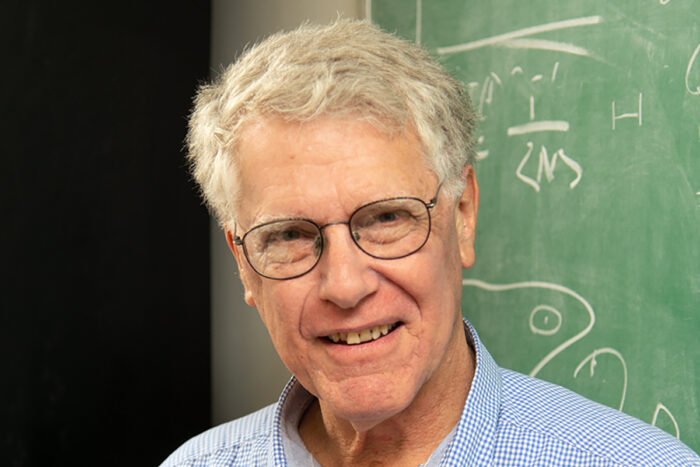Elson elected to National Academy of Sciences
Biochemist among 120 new members elected nationwide
 Washington University
Washington UniversityElliot Elson, PhD, of Washington University School of Medicine in St. Louis, has been elected to the National Academy of Sciences.
Elliot L. Elson, PhD, an emeritus professor in the Department of Biochemistry and Molecular Biophysics at Washington University School of Medicine in St. Louis, has been elected to the National Academy of Sciences.
Elson is among 120 new members and 30 international associates elected to the National Academy of Sciences this year. Election to the academy is considered one of the highest honors that can be awarded to a U.S. scientist or engineer. The newest members, announced April 26, bring the total number of active members to 2,461 and the number of international members to 511. International members hold citizenship outside the U.S. and are nonvoting members of the academy.
Elson is widely known for his role in pioneering microscopy methods that have become standard tools in the field of biophysics. These methods, called fluorescence correlation spectroscopy and fluorescence recovery after photobleaching, are used by thousands of researchers around the world to study the complex inner workings of cells and their environments. His early papers on these techniques have been cited in the scientific literature more than 5,000 times, highlighting their impact on the field.
Elson uses these tools — as well as newer microscopy methods he has developed — to study how cells move, change shape and maintain their structure. Such information helps scientists understand the impact of these cellular features on tissues and organs. His advances in microscopy have made it easier to study proteins on the surfaces of cells and how these proteins move, contributing to the understanding of cellular movement and structure.
After earning his bachelor’s degree in biochemical science from Harvard University, Elson went on to earn a doctoral degree in biochemistry from Stanford University in 1966. He continued his training as a postdoctoral researcher at the University of California, San Diego, before joining the faculty of Cornell University in 1968. He moved to Washington University School of Medicine in 1979, joining the faculty of what was then the Department of Biological Chemistry.
Read more about this year’s new members here: http://www.nasonline.org/news-and-multimedia/news/2021-nas-election.html.






